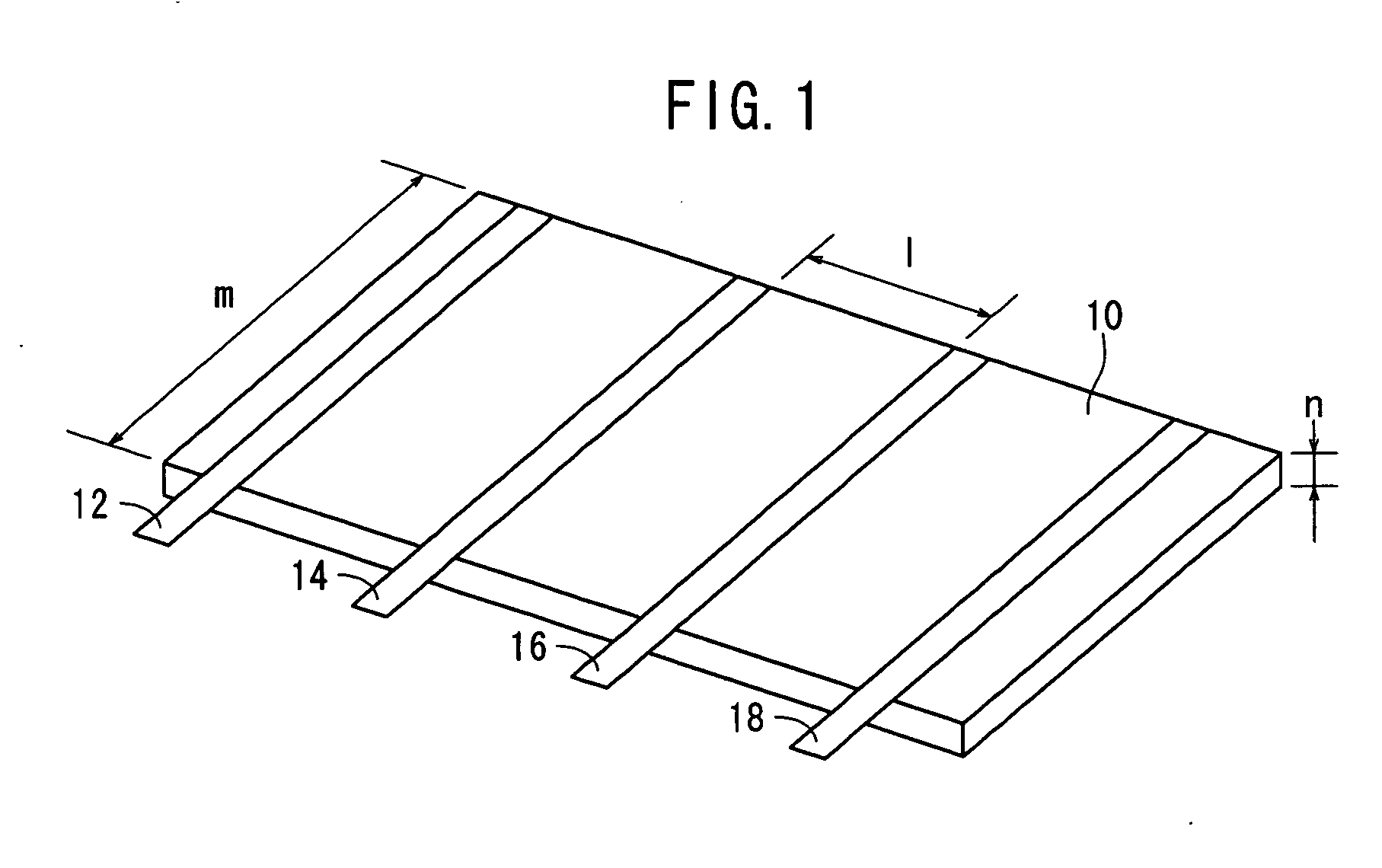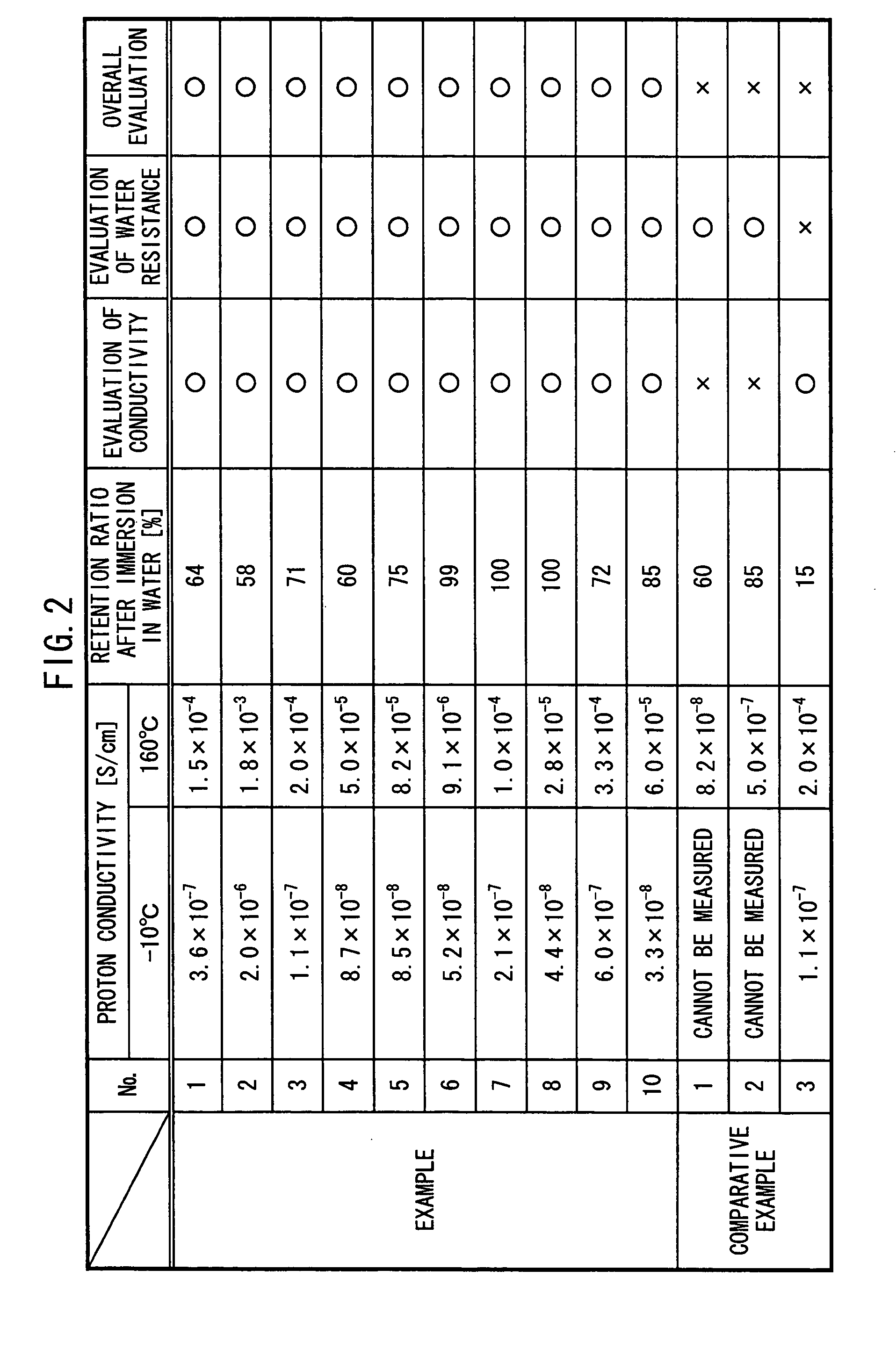Proton conductor
a technology of protons and conductors, applied in the direction of conductors, non-metal conductors, electrochemical generators, etc., can solve the problems of high fuel cell operation cost, large size of fuel cell, and extreme degradation of the protons of perfluorosulfonic acid polymers, so as to achieve excellent proton conduction, easy vaporization, and low cost
- Summary
- Abstract
- Description
- Claims
- Application Information
AI Technical Summary
Benefits of technology
Problems solved by technology
Method used
Image
Examples
example 1
[0115] 1 mol of acrylamide-methanepropanesulfonic acid (AMPS), 0.05 mol of azobisisobutylonitrile (AIBN) as a polymerization initiator, and 1 mol of 1-ethyl-3-methylimidazolium trifluoromethane-sulfonate (EMI-TF) as a salt structure of cation and anion were dissolved in 2 mol of ethanol to prepare a solution.
[0116] A porous PTFE membrane, which has a length of 3 cm, a width of 3 cm, and a thickness of 50 μm, was immersed in this solution for 60 minutes, followed by being dried under reduced pressure at room temperature to remove the solvent. This operation was repeated five times to retain AMPS, AIBN, and EMI-TF in pores of the porous PTFE membrane.
[0117] Subsequently, the porous PTFE membrane was heated for 6 hours at 60° C. in an Ar atmosphere to polymerize AMPS under the polymerizing action of AIBN.
[0118] Accordingly, a proton conductor was obtained, in which the AMPS polymer as an acidic group-containing polymer and EMI-TF as a proton acceptor were retained in the pores of th...
example 2
[0119] A proton conductor, in which the AMPS polymer and EMI-TF were retained in the pores of the porous PTFE membrane, was obtained in the same manner as in Example 1 except that the amount of EMI-TF to be dissolved was 3 mol.
example 3
[0120] A proton conductor, in which polystyrenesulfonic acid and EMI-TF were retained in the pores of the porous PTFE membrane, was obtained in the same manner as in Example 1 except that 1 mol of styrenesulfonic acid was dissolved in place of AMPS.
PUM
| Property | Measurement | Unit |
|---|---|---|
| Fraction | aaaaa | aaaaa |
| Fraction | aaaaa | aaaaa |
| Time | aaaaa | aaaaa |
Abstract
Description
Claims
Application Information
 Login to View More
Login to View More - R&D
- Intellectual Property
- Life Sciences
- Materials
- Tech Scout
- Unparalleled Data Quality
- Higher Quality Content
- 60% Fewer Hallucinations
Browse by: Latest US Patents, China's latest patents, Technical Efficacy Thesaurus, Application Domain, Technology Topic, Popular Technical Reports.
© 2025 PatSnap. All rights reserved.Legal|Privacy policy|Modern Slavery Act Transparency Statement|Sitemap|About US| Contact US: help@patsnap.com



